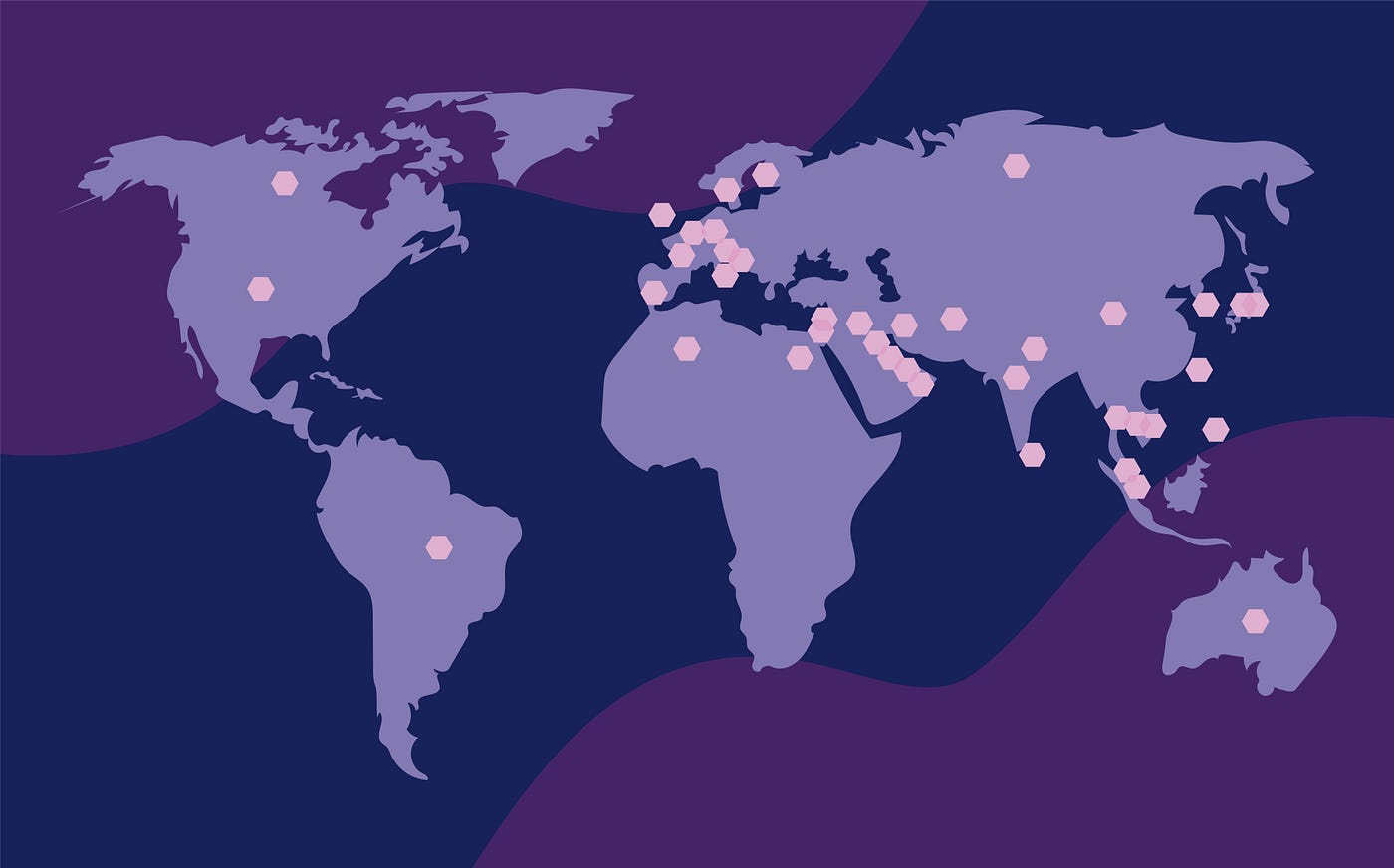As organizations expand globally, data isn’t just an asset—it’s a regulated resource. Laws like the EU’s GDPR, China’s PIPL, and India’s pending data‐localization rules impose strict requirements on where data can be stored, processed, and transferred. Violations can lead to hefty fines, legal exposure, and reputational damage. To navigate this landscape, enterprises must adopt a sovereignty‐aware architecture—one that aligns technical design with jurisdictional mandates while preserving agility and scalability. Below, we explore key considerations and strategies for building resilient, compliant data residency frameworks.
1. Understanding Data Sovereignty
-
Definition: Data sovereignty refers to the principle that digital information is subject to the laws and governance structures within the nation where it is collected or stored.
-
Key Drivers:
-
Privacy Protection: Safeguarding personal information according to local cultural norms and legal standards.
-
National Security: Preventing foreign access to strategic or sensitive data.
-
Economic Control: Ensuring domestic entities benefit from data‐driven innovation and value creation.
-
2. Mapping the Regulatory Landscape
| Region / Law | Data Residency Requirement | Notable Constraints |
|---|---|---|
| European Union (GDPR) | Personal data can flow within EU/EEA and to “adequate” third countries or via approved mechanisms (SCCs, Binding Corporate Rules). | Extraterritorial reach; strict data‐transfer impact assessments. |
| United Kingdom (UK-GDPR) | Mirrors EU GDPR post‐Brexit; approved adequacy with EU, Japan, Canada. | Adds domestic UK adequacy framework. |
| China (PIPL & CSL) | “Important” and “personal” data must be stored in China; cross‐border transfers require security assessment by CAC or approved certification. | Broad definitions; state security carve‐outs. |
| India (Draft PDP Bill) | Certain personal data categories (e.g., health, financial) must be stored locally; draft still evolving. | Anticipated strict localization and fines. |
| Brazil (LGPD) | Data transfers allowed to countries with equivalent protections or via contractual clauses. | Oversight by ANPD; extraterritorial scope. |
| Other APAC / LATAM | Varying degrees of localization—Indonesia, Vietnam, Nigeria, etc., each with nuanced rules. | Regional patchwork; frequent updates. |
3. Core Architectural Patterns
-
Regional Data Zones
-
Description: Physically isolate data in region-specific “zones” (cloud regions or on-premises data centers).
-
Implementation:
-
Leverage multi-region cloud providers (AWS, Azure, GCP) to guarantee data at rest never leaves its zone.
-
Use dedicated local data centers where public cloud is restricted.
-
-
Benefits: Clear physical separation; simplifies audit and compliance.
-
-
Data Localization Gateways
-
Description: Centralized control plane that proxies and inspects all cross-border data flows.
-
Implementation:
-
API gateways enforce routing rules based on data classification tags.
-
Data‐loss prevention (DLP) tools automatically redact or block prohibited transfers.
-
-
Benefits: Unified policy enforcement; real‐time monitoring.
-
-
Federated Data Architecture
-
Description: Distributed data ownership with a global metadata layer for discoverability.
-
Implementation:
-
Each region maintains its own data store; a federated catalog indexes schemas and lineage.
-
Queries are dispatched to local nodes; only aggregated, non-sensitive results cross borders.
-
-
Benefits: Balances local control with global insight; minimizes data movement.
-
-
Hybrid Multi-Cloud Mesh
-
Description: Combine public cloud zones, private clouds, and edge locations into a unified network.
-
Implementation:
-
Service mesh (e.g., Istio) with identity‐based routing ensures workloads access only compliant endpoints.
-
Encryption in transit (mTLS) and at rest; key management localized per jurisdiction.
-
-
Benefits: Flexibility to choose best-fit environments; avoids vendor and regional lock-in.
-
4. Data Governance & Operational Controls
-
Data Classification: Define sensitivity labels (e.g., “public,” “internal,” “personal,” “regulated”) and embed them in metadata.
-
Policy Engine: Deploy a rules engine (e.g., Open Policy Agent) to enforce “data-in-region” policies at API, ETL, and BI layers.
-
Audit Logging & Reporting: Maintain immutable logs of data access and transfers; automate compliance reporting for each jurisdiction.
-
Change Management: Establish a global committee to track regulatory updates and update architecture diagrams, runbooks, and policy configurations accordingly.
5. Best Practices for Implementation
-
Shift Left on Compliance
Integrate data‐sovereignty requirements into your CI/CD pipelines: automated tests should catch misrouted data flows before deployment. -
Collaborate with Legal & Local Experts
Engage country-specific counsel and privacy officers early to interpret nuanced rules and anticipate regulatory changes. -
Use Infrastructure as Code (IaC)
Parameterize region settings and compliance controls in Terraform/ARM/CloudFormation templates—enabling consistent, repeatable deployments. -
Design for Resilience & Performance
-
Implement smart caching and read-replicas within regions to avoid user-impacting latency.
-
Plan failover strategies that maintain residency constraints (e.g., a secondary data center in a compliant nearby jurisdiction).
-
-
Monitor Continuously
Leverage real-time observability tools (Prometheus, Datadog) and SIEM platforms to detect policy violations or anomalous cross-border traffic.
6. Real‐World Example: FinTech in APAC and EU
A global payments provider operating in both the EU and Southeast Asia implemented a federated mesh architecture:
-
EU Zone: All Euro‐denominated transaction data is stored and processed in an EU-based cloud region with GDPR-compliant key management.
-
APAC Zones: Singapore and Indonesia each host local PSP integrations; region-specific PIPL consent workflows apply in China.
-
Global Insights: A lightweight analytics layer aggregates non-PII metrics (volumes, latency, error rates) for central BI—never shipping raw transaction logs across borders.
-
Governance: An Open Policy Agent instance enforces data tagging rules; audit logs feed into a global SIEM with region-filtered dashboards.
This approach balanced local compliance and global operational consistency—paving the way for rapid market expansions with minimal re-architecture.
Conclusion
Data sovereignty is no longer a checkbox—it’s a strategic imperative demanding harmonized architecture, rigorous governance, and tight collaboration between technology and legal teams. By adopting patterns like regional data zones, localization gateways, federated meshes, and multi-cloud fabrics, organizations can satisfy disparate residency requirements while preserving the agility to innovate globally. With continuous monitoring, automated policy enforcement, and infrastructure as code, you’ll transform data sovereignty from a constraint into a catalyst for trust, compliance, and competitive advantage.
How is your organization architecting for data sovereignty? Share your strategies and lessons learned in the comments below!
